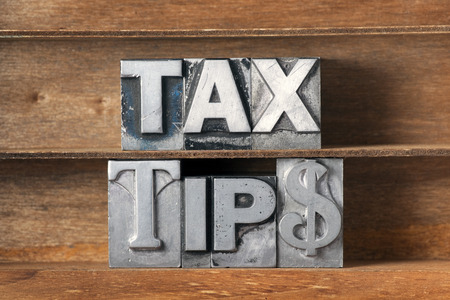Amy Miller, AFC®

Preparing taxes can be overwhelming so many of us turn to others to complete and file our returns each year. Last week we looked at discounts and free services that are available for military members and veterans when filing a return. This week, I thought we would look at receiving those refunds and the fees that can be associated.
Even though around 70% of all taxpayers can file their federal return-free and opt for direct deposit at no additional cost, many will choose to pay for services that allow them to receive their money more quickly or that allows them to have the filing fees delayed and later deducted from their return. These refund transfer products are known as refund advance or anticipation loans (RAL) and refund advance checks (RAC).
Refund Advance or Anticipation loans are just what the name says – a loan backed by the refund you will be receiving from the IRS. Your tax preparer will complete the return and file it electronically. You are then extended the funds within a day or two. The preparer sets up a temporary, limited purpose, deposit account through a bank and the refund is deposited there. According to the IRS, Americans take out around 2 million RALs per year.
Refund Advance Checks allow individuals to delay paying for the preparation and filing. All fees are deducted before the taxpayer receives their refund. This is considered a non-loan product and is popular with individuals that can’t or don’t want to pay filing fees upfront. Approximately 21 million Americans utilize RACs each year.
Once the return is filed, individuals have a few options for receiving their funds. The best option is usuing direct deposit into your own bank account. There aren’t any additional fees for this transfer or to access your funds.
Options for individuals without an existing account include a debit card or a check from the backing financial institution. Both options have fees associated with them. Most preparation services prefer to have the funds paid via a debit card. These debit cards are loaded with the return and funds can be withdrawn at ATMs or local banks as a cash advance. Transaction fees apply to each withdrawal. You can request a paper check, but most preparers will charge around $25 for this option. Once you receive the check, you will need to cash it. Often the filing company will have agreements with local institutions to negotiate these checks for their clients. The check cashing institution typically charges a fee of anywhere from $8-$15 per check. Some preparers also offer Wal-Mart Direct2Cash, where you can go to your local store and pick up your cash (up to $7500) – again, for a fee. These are fees incurred in addition to the original filing fee and the fee for the deposit transfer (RAL & RAC), which is around $30-$40.
Other than fees, you also want to consider issues with receiving stimulus and child tax credit payments that have arisen in recent years and continue to create hurdles for taxpayers in need of this assistance. When using one of these services, the IRS has the temporary account information on file and is only authorized to disburse to that account. This has resulted in payments being rejected by the receiving bank and refunds to be sent via mail on a debit card – delaying access to the taxpayer. And again, there are transaction fees associated with these cards, ultimately reducing the amount of the benefit being received.
These products are very tempting but only cost the taxpayer more in the long run. In the end, having a checking or savings account, and adding that account to your return is always best. I encourage you to consider these fees when choosing how you will file and receive your return this year. There is still time to open an account and put it on your tax return. You can visit AMBA’s website to find a list of banks on military installations or that serve the military community.
So far this year, we’ve been focusing on being financially fit – paying $40 to defer a $300 fee for 3 weeks (the average time for an electronically filed tax return to be direct deposited into your account) equals paying over 200% interest APR if we were to look at this as if it were a loan. Ask yourself, would you agree to those terms in any other situation?
Avoiding unnecessary fees is a necessary step toward savings and achieving your end goal(s).